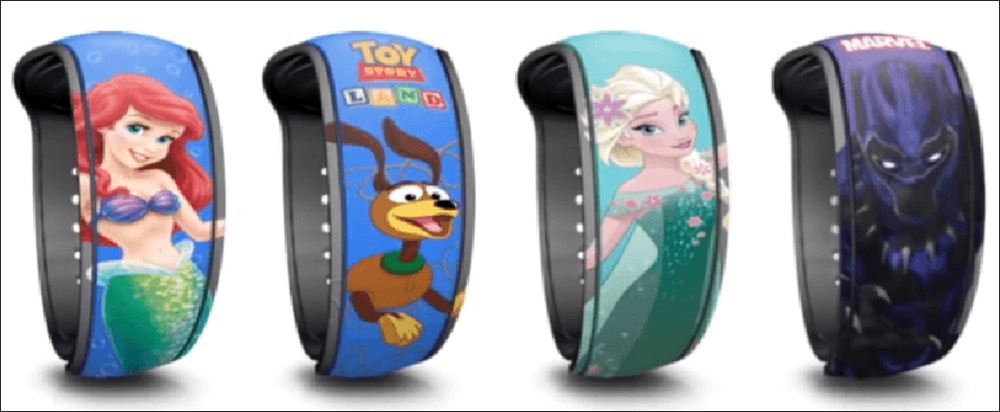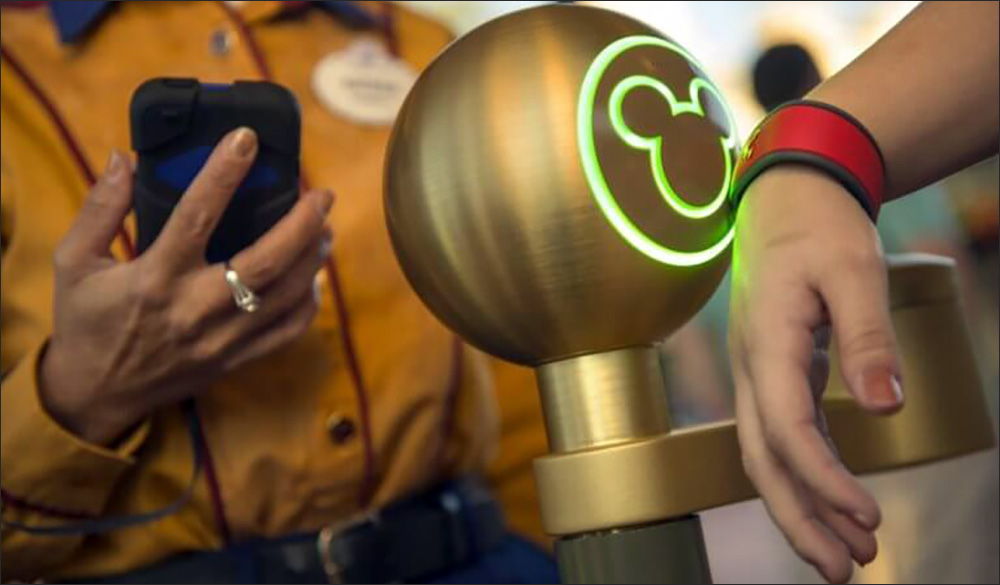Or we could, I don’t know…use our eyes/brains. ![]()
(Cynicism aside, I’m sure someone will come up with practical applications of this.)
Or we could, I don’t know…use our eyes/brains. ![]()
(Cynicism aside, I’m sure someone will come up with practical applications of this.)
Hasn’t anyone told you?
The Mark I eyeball and Mark IV brain are obsolete technology.
![]()
![]()
![]()
![]()
![]()
![]()

I cannot tell you HOW MANY TIMES I have wondered where my Dremel tool was when it was in my hands running at full speed while I was looking at my nonexistent watch for additional information. 
In reality: I can see this sort of tech being used to in something like the The Void’s Star Wars VR thing - perhaps the tech senses you picked up the right tool or laser blaster to deal with something in the game vs the wrong one, etc.
If you substitute “can of Diet Root Beer” for “Dremel tool” in that sentence, I’m TOTALLY in the same boat.
Catching up on some old Research Hub videos - this one is not MagicBand related, but pretty cool!
Although I do take offense that they did not reference the defacto genius in this technological field.

Interesting that they decided MBs were not a fit. ![]()
Been awhile since there has been a MB article anywhere… coming from the RFID Journal I was hoping there’d be more technical info in it, but I’ll still pin it here for posterity.
BY RICH HANDLEY
After embedding radio frequency identification into its park-access bracelets several years ago, Walt Disney World now plans to begin focusing more on smartphone apps.
Aug 23, 2020Not long after the COVID-19 pandemic began, Walt Disney World announced that it would no longer be taking orders for the RFID-enabled MagicBand slap bracelets it issues to guests so they can gain park and ride access, as well as purchase food, beverages, memorabilia and other goods. The various Disney parks closed in March 2020 with the goal of reopening in April, though that plan fell through as the coronavirus spread in alarming numbers, resulting in the parks remaining closed for a more extended span of time, during which the MagicBands were unavailable to Disney fans.
According to a report from WDW News Today, the MagicBands are now back in Disney stores, featuring such characters as Figment (the mascot of EPCOT’s Imagination! pavilion), Orange Bird (a Florida Citrus Commission mascot that appears in Magic Kingdom’s Enchanted Tiki Room), Stitch (of Lilo and Stitch fame) and Olaf (from the Frozen films), along with longtime Disney staples Mickey Mouse and friends. Radiofrequency identification is still built into the bracelets, indicating the company has fixed problems it reportedly had with RFID that had caused it last year to pull the MagicBands from its shelves. Innovation rarely stagnates at Disney, and the bands may soon give way to newer technologies based around the ubiquitous smartphone.

Disney unveiled the wristbands at its theme parks in spring 2014, when it began providing the dual-frequency (13.56 MHz and 2.4 GHz) MagicBands to all resort guests who booked a Walt Disney World hotel reservation. The bracelets let visitors access services reserved through its Web-based My Disney Experience system. All entrance points to the park, all rides and events, and all Disney hotel rooms and point-of-sale locations are equipped withhigh-frequencyRFID readers to read the bands’ tags, making the customer experience quicker and more fun by reducing queues and the need to carry cash, tickets and IDs (see MagicBands Bring Convenience, New Services to Walt Disney World).
The unveiling followed a 2013 New York Times article discussing Disney’s plans for the wristbands (see At Disney Parks, a Bracelet Meant to Build Loyalty [and Sales]). That article drew concern from Congressman Ed Markey, who put out a rather alarmist press release indicating he’d “raised questions today about the privacy implications for children visiting Disney theme parks resulting from the company’s plan to offer a new bracelet at its parks that will serve as a payment source, room key and gateway to other services during visits to some Disney parks” (see Grilling Disney Over the Use of RFID). Markey’s fears proved unfounded, of course, and the MagicBands rolled out as planned.

In short order, the bracelets began featuring a wide variety of characters, and they’ve became popular collector’s items among frequent park visitors. Guests could choose a complimentary MagicBand with a solid color, or they could pay for an upgrade to one featuring Minnie Mouse, Disney Princesses, Toy Story characters or other Disney cast members. Many such designs have since been added to the mix. Not surprisingly, the company recently added a Star Wars “baby Yoda” version of the RFID wristbands, capitalizing on the success of the Disney+ and Lucasfilm series The Mandalorian .
In June of this year, InsidetheMagic.com reported that Disney plans to discontinue its practice of offering complimentary bands—though fans can still purchase them if they so desire—so that it could roll out a new system involving smartphones as part of the My Disney Experience app. Disney put out the following statement explaining its decision to do so:
“As you begin planning your upcoming visits, we’re also exploring engaging ways for guests to use their mobile tech to experience the magic—particularly now as the use of phones and apps continues to evolve. In 2021, we plan to unveil an innovative new offering as part of the My Disney Experience app that will bring features of a MagicBand to your smart devices, building on the app’s existing digital key feature. With this new offering on the horizon, we will be retiring our complimentary MagicBand distribution to Disney Resort hotel guests for new reservations with arrivals beginning Jan. 1, 2021. Disney Resort hotel guests will continue to have the option to purchase new MagicBands at a discount, and we’ll be introducing even more colors and designs featuring favorite Disney characters in the future. Guests who prefer not to purchase a discounted MagicBand will be able to use the My Disney Experience app or a Key to the World card during their visit. We will still offer MagicBands in retail locations and on shopDisney.com, and guests will be able to continue using the wearables throughout Walt Disney World Resort.”

Beyond the use of wristbands, Disney has long seen the value of RFID technology, going back to 2009 when the entertainment giant began investing in upgrading its stores, with RFID greatly improving the customer experience (see Disney Gets It). Three years later, it began using passive UHF RFID tags to track $100 million worth of costumes at its parks and on its cruise ships, making garment issuance a self-serve process. The system improved the visibility of costumes during its laundering and repair processes, and it also reduced the amount of time required to perform inventory counts. An increase in job satisfaction was an unexpected benefit, since park personnel found that the technology made things easier for them (seeRFID Helps Disney Employees Get Into Character).
In 2016, the company’s lab network, together with scientists from MIT, the University of Washington and Carnegie Mellon, developed systems with which it could enable robots to better identify individuals, as well as track everyday interactions between people and things. Disney Research published academic papers describing such novel uses of RFID, and the company also spoke at that year’s RFID Journal LIVE! conference and exhibition (see Disney Research Explores Ways to Add RFID Intelligence to Robots, Toys). So its use of the RFID-enabled MagicBands was a natural development, as Disney has always been at the forefront of innovation.
With news of the MagicBands’ decreased prominence, it will be interesting to see how the House of the Mouse will employ radio frequency identification and similar technologies down the line. Founder Walt Disney famously said “All our dreams can come true if we have the courage to pursue them,” as well as “Get a good idea and stay with it. Dog it and work at it until it’s done right.” Disney had a good idea with its MagicBands, it had the courage to pursue the dream of automated park access and cashless purchases, and as it now transitions from wristbands to smartphone apps, it has shown its great capacity to work at something until it’s done right. I have a feeling that were he alive today, ol’ Walt would approve.
Rich Handley has been the managing editor of RFID Journal since 2005. Previously, he was the managing editor of Advanced Imaging magazine and the associate editor of Printing News. Rich has authored, edited or contributed to numerous books about pop culture and is also the editor of Eaglemoss’s Star Trek Graphic Novel Collection.
This is what all my nightmares are made of…
I had a little anxiety for you just reading this. ![]()
Disney is assuming universal NFC in phones, which isn’t the case. I couldn’t unlock the door to my room using my phone as their app suggests because it doesn’t support NFC. I had to rely on the MagicBands. I tried using my phone, but no go. And the phone I was considering upgrading to also doesn’t have NFC.
Been awhile since I’ve seen any cool tech articles… but if anyone wants to buy a Galaxy’s Edge or Haunted Mansion touchpoint to use with their MagicBands at home… (among other things):
That is called Kinetic Engineering. aka You Hit It.
Walt Disney Co. has been approved for a patent to project moving 3-D images on real-world objects to interact with theme park visitors, making it easier to create interactive attractions throughout its theme parks.
The U.S. Patent Office approved the patent for Disney Enterprises last month for a technology described as a “Virtual World Simulator.” Disney officials say they have no immediate plans to use the technology.
In 2016, Disney took out a patent on a device that would take images of visitors’ shoes to gather data and help customize visits. The patent describes a machine that snaps photos of visitors’ feet as they enter a theme park and matches the photos with demographic information given voluntarily, such as name, age or hometown.
Later in the park, another camera aimed at shoe level could identify a person at a ride or eatery based on the earlier foot photo, according to the patent. Disney has yet to launch what the patent described as a “system and method using foot recognition to create a customized guest experience.”
This was the most interesting part of the article to me. Of all the things I imagined WDW would want to track about me, my Chacos were not something I had considered! ![]()
Yeah that’s pretty wild!
Interesting tech, but feasible for the volume needed? Maybe if it carried your kids too?
Disney patents tech for ‘robot sherpa’ that could transport theme park guests’ items
The Walt Disney Co. (NYSE: DIS) is taking a look at a robotic sherpa as a way to lighten the burden guests carry while visiting theme parks.
The Burbank, California-based theme park giant, which owns and operates Walt Disney World in Orlando, filed a patent titled “Robotic Sherpa,” which describes a moving locker system that could move with theme park guests and allow them to access stored items at their leisure. Images with the patent show a robot with various cameras that appear to help it navigate — likely through the large crowds of a theme park.
More here:
Subscriber only to read the article.
Hmm, I am not a subscriber and it opened for me. It just showed up in my news feed and I opened it.
Pasted using reader mode…
Richard Bilbao
3 minutes
The Walt Disney Co. (NYSE: DIS) is taking a look at a robotic sherpa as a way to lighten the burden guests carry while visiting theme parks.
The Burbank, California-based theme park giant, which owns and operates Walt Disney World in Orlando, filed a patent titled “Robotic Sherpa,” which describes a moving locker system that could move with theme park guests and allow them to access stored items at their leisure. Images with the patent show a robot with various cameras that appear to help it navigate — likely through the large crowds of a theme park.
The patent’s text further describes how the mobile locker may have a detachable storage compartment that can be transferred to other mobile units. “The storage compartment can be coupled either the same or a different mobility unit. The mobile lockers can be recalled by a customer to either the customer’s location or to designated locations at the venue. The lockers can include any one of multiple locking mechanisms,” said the patent.
In addition, images with the patent show a mobile phone app that may allow the user to call, lock/unlock, map and check the status of their moving robotic sherpa.
There are no plans for the technology as of now, said Disney. “As Imagineers, we’re always pushing technology and innovation and testing new applications for possible future opportunities. At this point, we simply are exploring potential uses for this technology and have no plans for specific implementation,” Diego Parras, spokesman with Walt Disney Imagineering, told Orlando Business Journal .
The reason for the patent is to help guests better organize their items with their needs, said the patent. “Patrons of large venues (e.g., amusement parks) pack and carry many items with them, but only need a few of those items at different points during the day. For example, lunch may be packed, but it is needed at only at one point in the day. Umbrellas or outerwear may be needed sporadically based on current weather conditions, but these items are currently carried all day.”
In addition, regular retail shopping could be hindered if the person is carrying purchases, added the description.
A tech like this may have been spurred by focus group discussions on everyday guest experiences, said John Gerner, managing director with Leisure Business Advisors, a Richmond, Virginia-based theme park consultant. The patent included a rendering of a mother carrying a child and using the sherpa to help carry items.
Been awhile since I’ve seen any new Disney tech stories to add on here.
This SXSW session is very talky-talky, but has some cool stuff in it.
I thought the Judy hops robot after this point in the video was neat - could be some fun interactions if they have characters doing things in-park:
Another year gone by, Wowee.
Quick, but interesting report on some Disney tech. I’d like to see that Hulk suit!